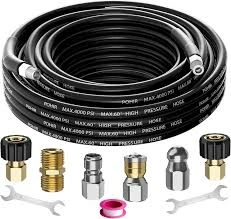Choosing the Right Material for Power Steering Hoses in Automotive Applications
Understanding Power Steering Hose Materials A Comprehensive Overview
Power steering systems are vital components in modern vehicles, allowing drivers to steer with great ease and precision. Central to these systems is the power steering hose, which conveys hydraulic fluid from the pump to the steering gear. The material used in power steering hoses is crucial for ensuring the durability, flexibility, and efficiency of the system. In this article, we will explore the various materials used in the manufacture of power steering hoses, their properties, and the implications of these choices on vehicle performance and maintenance.
Common Materials for Power Steering Hoses
1. Rubber Traditionally, rubber has been the most common material for power steering hoses. The flexibility and elasticity of rubber make it an excellent choice for high-pressure applications. However, not all rubber is created equal. Synthetic rubber, such as EPDM (Ethylene Propylene Diene Monomer), is frequently used because of its resistance to heat, oxidation, and various automotive fluids. This resilience contributes to a longer service life compared to traditional natural rubber.
2. Thermoplastic Elastomers (TPE) TPEs are a modern alternative to rubber, combining the characteristics of plastic and rubber. They offer excellent flexibility and chemical resistance, making them ideal for use in hostile environments. TPE hoses can withstand high temperatures and pressures, providing enhanced durability. Their manufacturing process also allows for easier recycling, making TPEs a more environmentally friendly option.
3. Steel Braiding While not a standalone material for hoses, the addition of steel braiding is critical for enhancing the strength and pressure resistance of rubber or TPE hoses. Steel braided hoses can handle significantly higher pressures than their non-braided counterparts. This construction reduces the risk of wear and tear over time, especially in high-performance vehicles where steering systems operate under extreme conditions.
4. Polyamide (Nylon) Polyamide is another promising material used for power steering hoses, primarily due to its lightweight properties and durability. Nylon hoses can withstand high pressures and have excellent chemical resistance. However, they may not provide the same level of flexibility as rubber hoses, which could be a concern in applications requiring tight bends and curves.
power steering hose material

Properties of Power Steering Hose Materials
The choice of material affects several key properties of power steering hoses
- Temperature Resistance Power steering systems operate in varying temperature ranges. Effective hoses must withstand both high and low temperatures without degrading. Materials like EPDM and TPE excel in this area, maintaining their integrity across a wider temperature range.
- Chemical Resistance Power steering fluid can be corrosive. Therefore, the ability of a hose material to resist degradation from automotive fluids is crucial. Rubber and nylon are generally effective, but TPEs often provide superior resistance against a broader range of chemicals.
- Flexibility and Bend Radius Hoses must be flexible enough to accommodate the vehicle’s design while minimizing the risk of kinking. Rubber hoses typically offer the best flexibility. The material's bend radius is significant for installation and long-term operation.
Conclusion
Choosing the right material for power steering hoses is critical for vehicle performance, safety, and longevity. Each material—rubber, thermoplastic elastomers, steel braiding, and polyamide—presents unique advantages and limitations. As advancements in materials science continue, we may see even more innovative solutions that enhance the efficiency and durability of power steering systems. Ultimately, understanding the properties of these materials can help both manufacturers and consumers make informed decisions that can lead to better vehicle performance, reduced maintenance costs, and improved safety on the road. Whether for a daily driver or a high-performance machine, selecting the ideal power steering hose material is an integral part of automotive engineering.
-
Ultimate Spiral Protection for Hoses & CablesNewsJun.26,2025
-
The Ultimate Quick-Connect Solutions for Every NeedNewsJun.26,2025
-
SAE J1401 Brake Hose: Reliable Choice for Safe BrakingNewsJun.26,2025
-
Reliable J2064 A/C Hoses for Real-World Cooling NeedsNewsJun.26,2025
-
Heavy-Duty Sewer Jetting Hoses Built to LastNewsJun.26,2025
-
Fix Power Steering Tube Leaks Fast – Durable & Affordable SolutionNewsJun.26,2025

